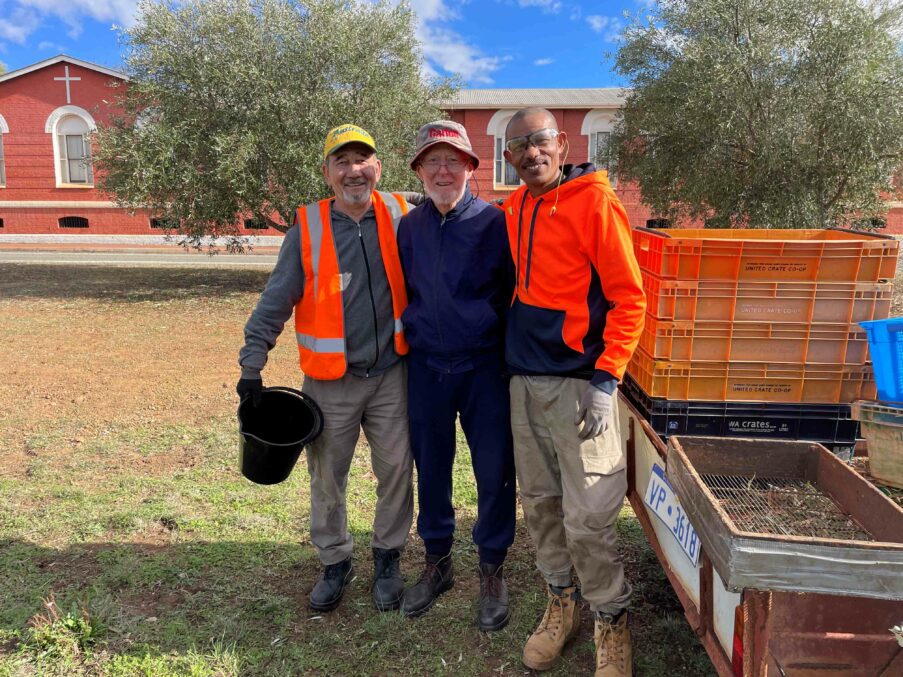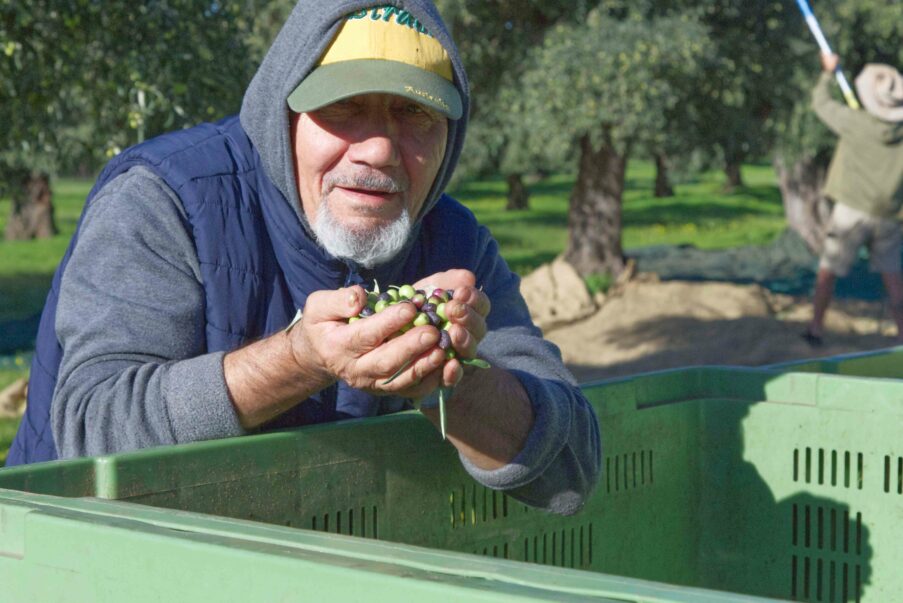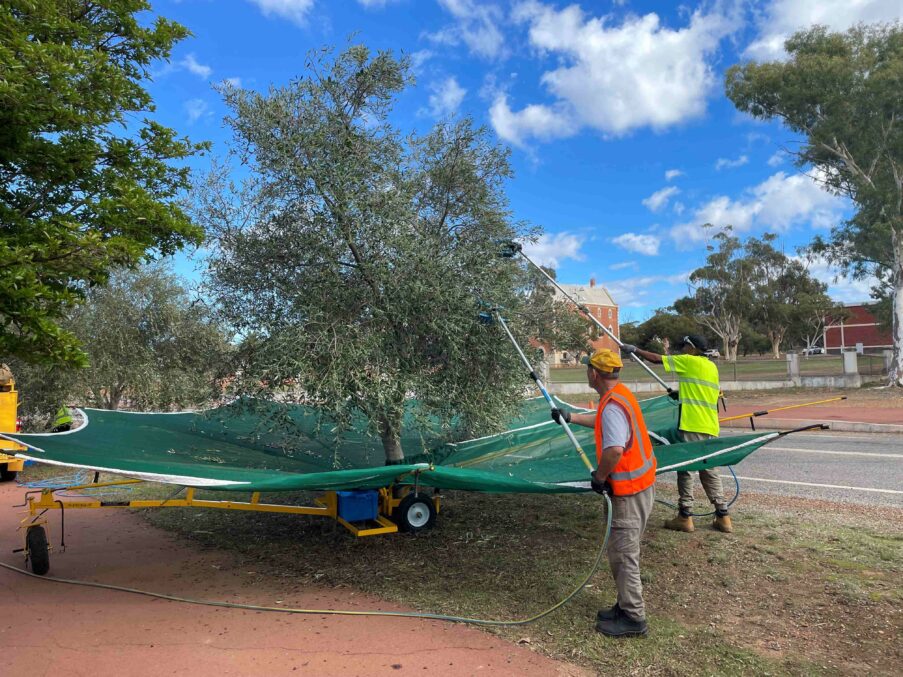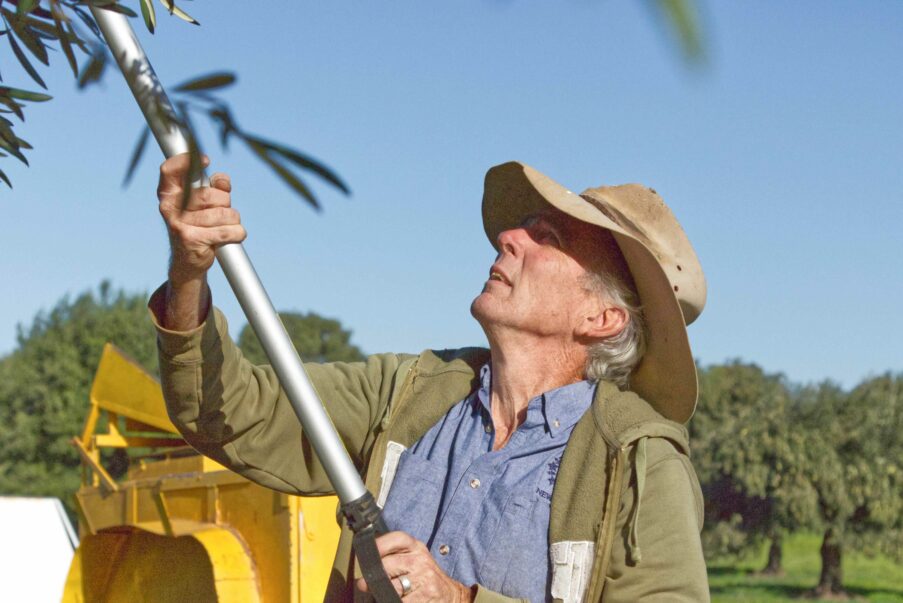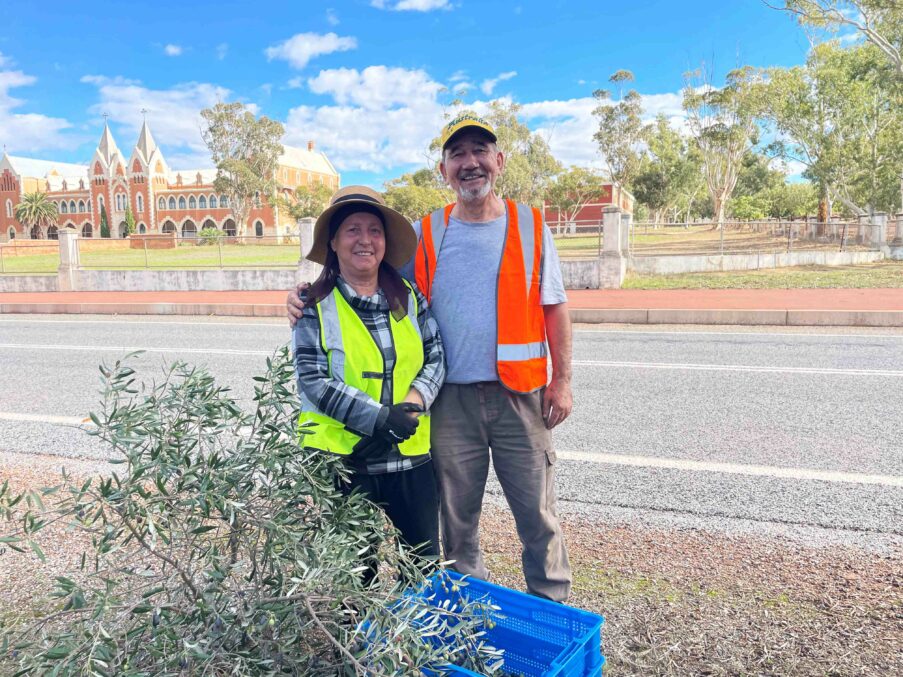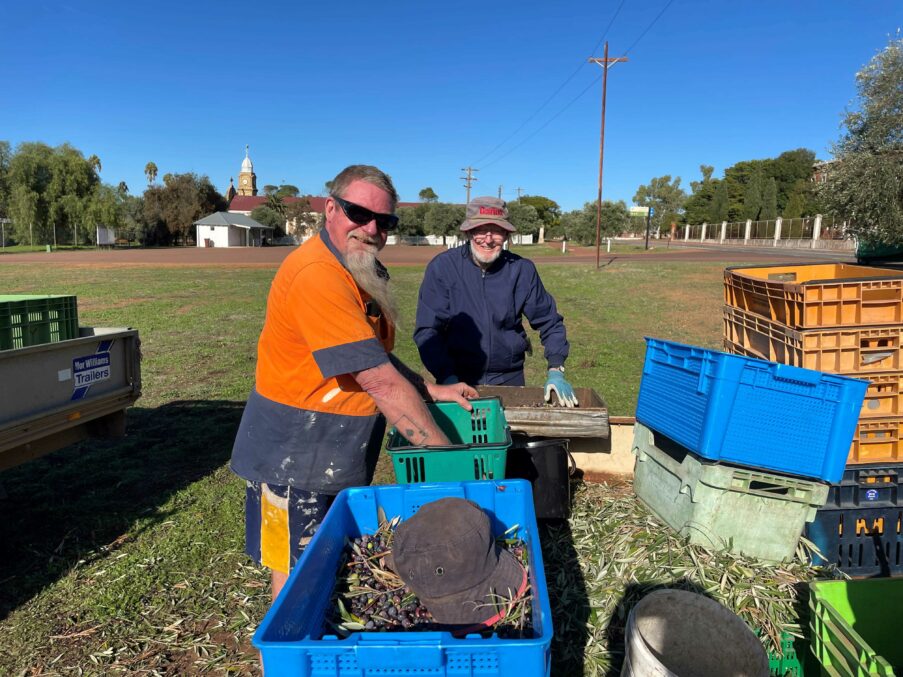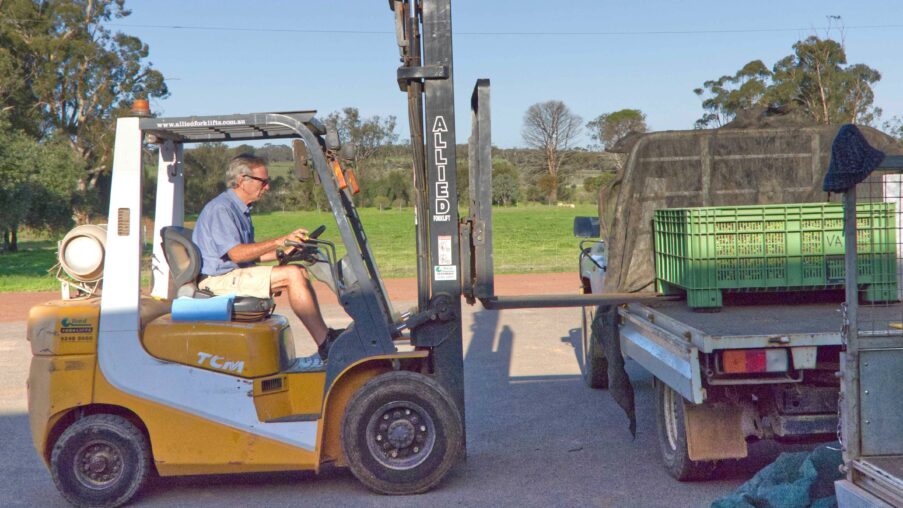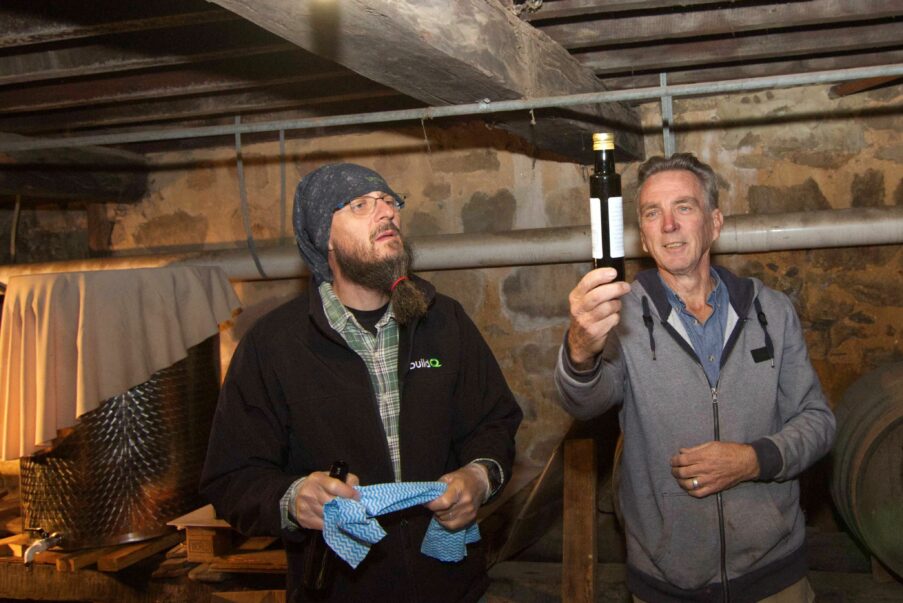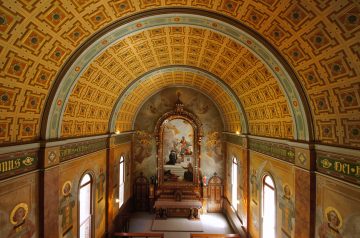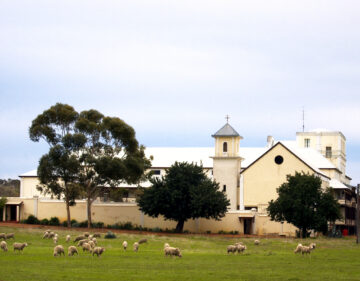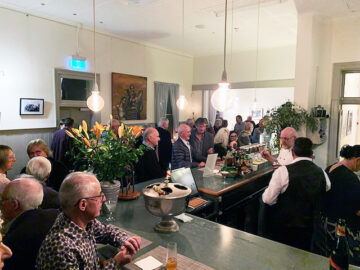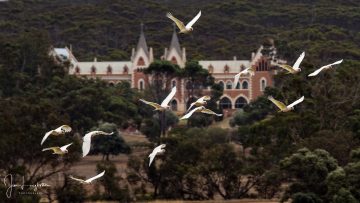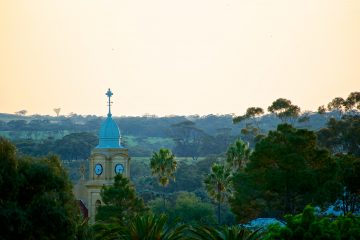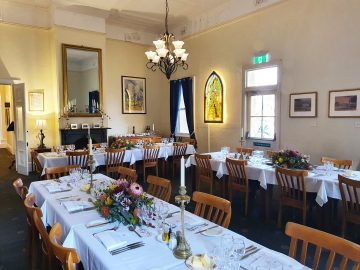Thursday, 29th December 2022
Quality Over Quantity Wins New Norcia’s Olive Oil Multiple Awards
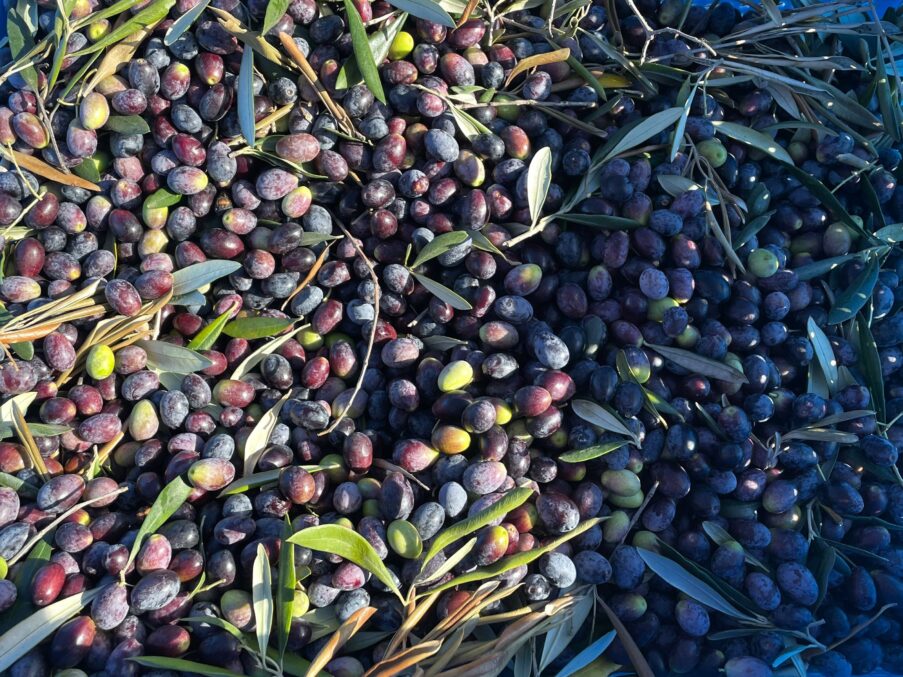

Following a sabbatical year of dormancy in 2020, New Norcia’s 170-year-old olive grove is back with a bang. Winning Gold for its 2021 oil and no less than five awards for the 2022 vintage, the monastery’s olive oil continues to prove itself worthy of the highest status in national and regional competitions.
'This year was the first time the team attended the 2022 West Australian Olives Award night in the Swan Valley,' said Property Manager Ian Smith.* The harvest team included Maintenance/Grounds staff along with refugee workers assigned to gain work experience on site from Mercy Care in Perth. Volunteers from the Guesthouse also came out to assist with picking, which began on 16 May and continued through to the end of June.
The monks assist by hand picking and cleaning the leaves and small twigs before the olives are sent to the York Olive Oil Company for pressing. This year’s harvest produced 14kgs, or 1,400 litres of oil, approximately a 10% return – down from the average of 18-19% in previous years. Still, winning Premium Gold, Best Oil of Show, and Best WA Oil in the WA Olive Awards, plus Gold and Best WA Oil in the Australian Olive Association competition proved that quality over quantity is the key to success.
Planted between 1850 and 1860, with additions from the 1990s, the grove now has close to 500 trees, the majority of which are WA Mission varieties. Dom Paulino Gutierrez, the last Spanish monk before he died in 2010, was a driving force in running and caring for the olive grove. He also oversaw the production of the extra virgin olive oil with the old stone mill, along with long-time resident Lester Jacobs. For many years the duo was supported by the Old Boys of St Ildephonsus’ College, led by Laurie Watson, who came up to assist with harvests until retirements and health issues precluded them from coming.
This year’s harvest was the longest ever, due to low numbers of pickers. 'We were fortunate to get help from the three refugees sent by Mercy Care', Ian said. Language barriers presented many challenges to the team of pickers, especially when attempting to explain to people with limited or no English what needs to be done to harvest olives. The migrant pickers spoke different languages, including Ilshat and Ilnuf from Kazakhstan and Yohannes from Eritrea, Africa. But this made for some fun and funny times.
'One time', recalls Ian, 'we asked one of the pickers if he could move the ute with the air compressor to the next set of trees near the fence. Next thing we know, the ute with the air compressor is parked on top of the fence, no longer next to the fence'.
Another afternoon, the team was working to place mats under the trees. 'As we approached one tree, a 1.2 metre brown snake was sunning itself at the base of the tree'! Needless to say, those olives are still on that tree.
Despite the few mishaps, the whole crew got on well, working with the challenges that can be experienced when English is not the common language. The camaraderie and sense of a common purpose made it a great experience for all, Ian said.
Ian attended the annual conference of the Australian Olive Oil Association in Tasmania this year, learning about new technologies in the industry. One equipment upgrade he’s made is the purchase of an Olinet, an upside-down umbrella that catches the olives and funnels them into a central container under the tree. With diminishing availability of pickers, this makes the harvest a lot quicker and easier, he said.
Along with the peace and prayers that waft across the land from the nearby monastery oratory, the olive grove is blessed with regular attention by the Grounds team, along with migrant sheep, who graze under the trees and provide natural fertilisation. Like their prayer life, the monks have always liked to keep the grove as simple and natural as possible. Perhaps this then is the hidden recipe for success in their award-winning oils.
*Errata: a previous version of this article incorrectly stated that the Grounds team had attended the awards ceremony in Tasmania, when in fact they went just down the road to Swan Valley. Ian Smith attended the Conference in Tassie.
